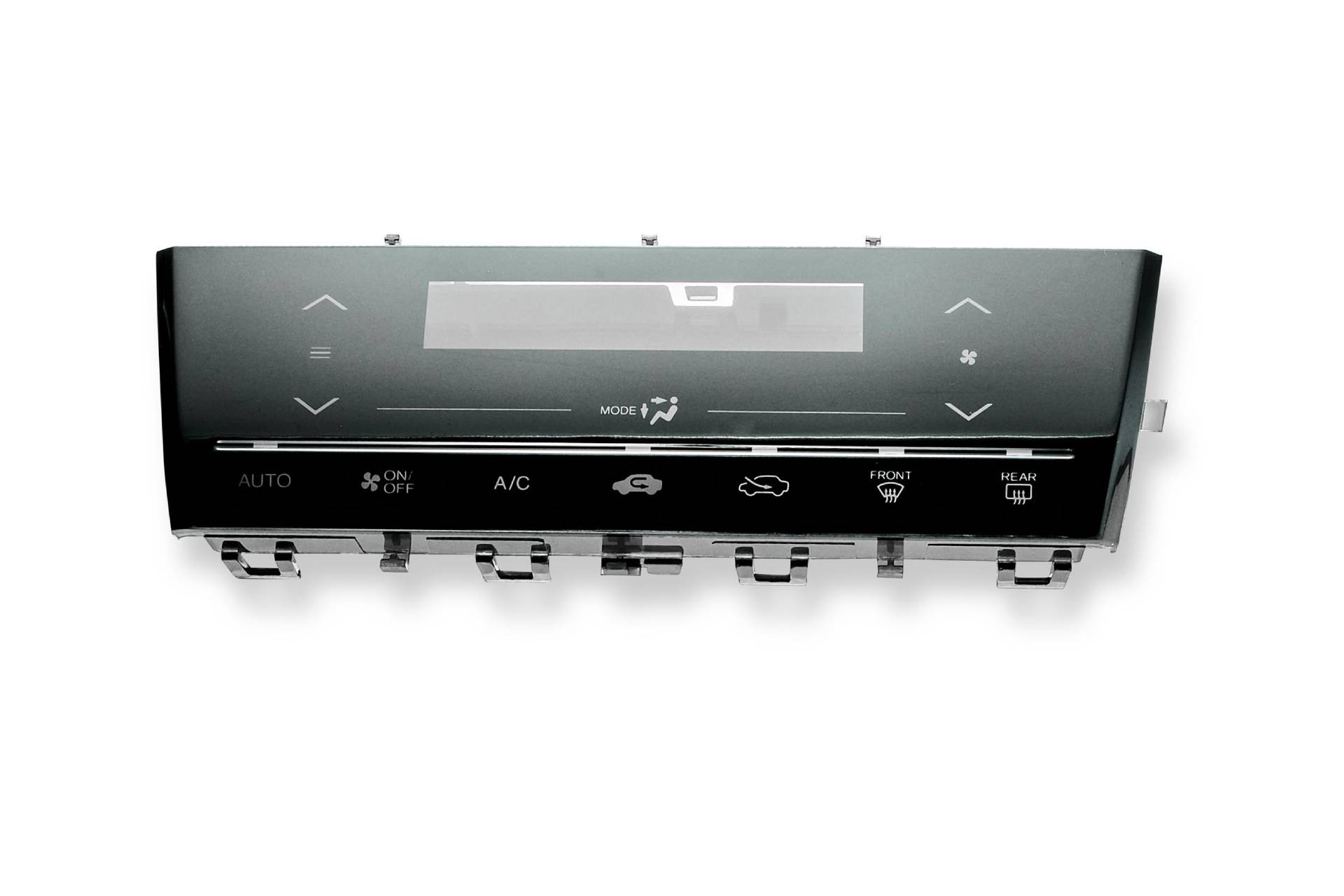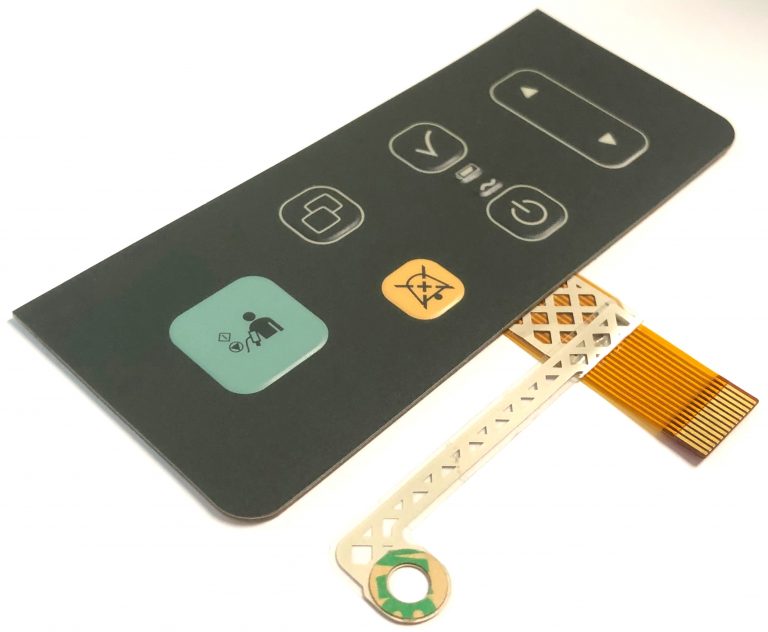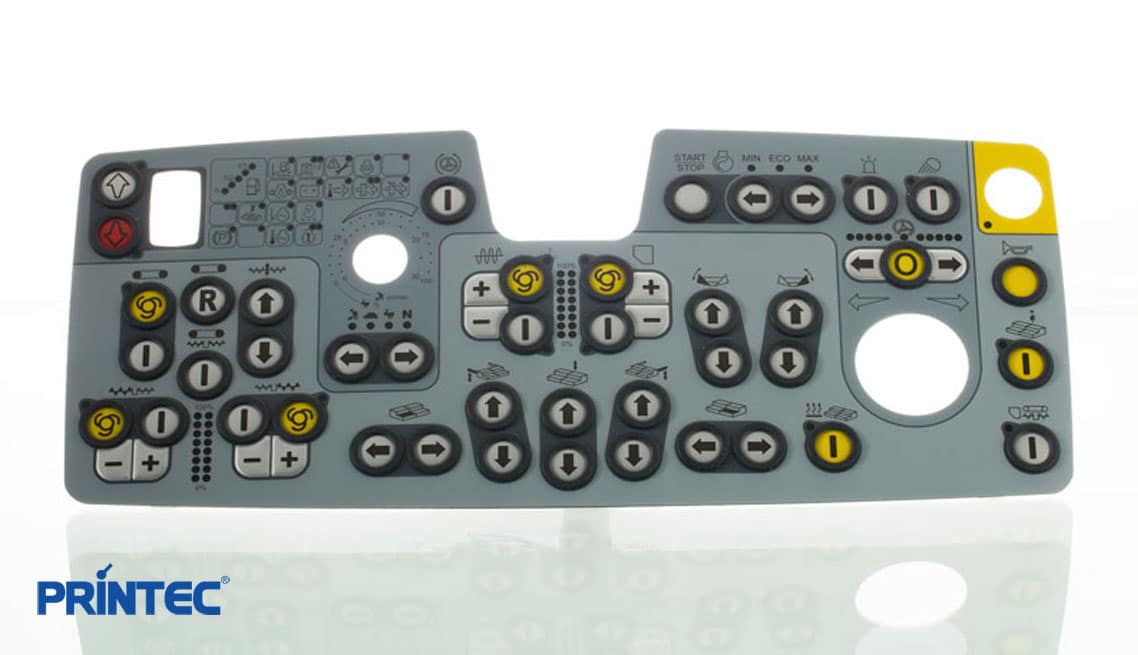A well-known membrane switch manufacturer provides both trial and mass production options.
A well-known membrane switch manufacturer provides both trial and mass production options.
Blog Article
All About Membrane Layer Switch: Recognizing Its Layout and Functionality
When you consider the control interfaces in modern gadgets, membrane layer switches often enter your mind. These parts are extra than just buttons; they blend style and functionality flawlessly. Comprehending just how they function and what makes them efficient can transform your viewpoint on day-to-day electronics. There are subtleties to their design and performance that you could not be conscious of. Let's explore what collections membrane layer changes apart from other control systems.
What Are Membrane Layer Buttons?

Their smooth nature makes them easy to tidy and immune to dust and moisture, a vital attribute in lots of environments. Membrane buttons can likewise be personalized relating to shape, size, and graphics, allowing suppliers to create one-of-a-kind interfaces tailored to particular items. Plus, they're lightweight and thin, which helps in reducing the general bulk of devices. In general, membrane buttons play a substantial function in boosting individual experience across a large range of applications.
How Membrane Layer Changes Job
When you push a trick on a membrane layer switch, it turns on a simple yet reliable mechanism. membrane switch manufacturer. The top layer, often made of versatile product, pushes down onto a conductive layer under it.
You'll notice that the tactile feedback differs based on the button design, supplying either a soft click or an extra noticable feedback. When you launch the trick, the membrane layer go back to its original position, resuming the circuit and quiting the signal. This process occurs almost immediately, making certain a receptive user experience.
Membrane layer switches are preferred due to their toughness and resistance to dirt and wetness, making them ideal for different applications, from home appliances to medical devices. Recognizing this operation assists you value their prevalent usage.
Key Parts of Membrane Switches
Comprehending the crucial components of membrane layer switches is fundamental for realizing their functionality and style. At the core, you'll locate the visuals overlay, which gives the aesthetic user interface for individuals. Below that, there's a spacer layer that divides the circuit layers, making certain that they don't make call up until pressed. The circuit layer is where the magic takes place; it contains conductive traces that complete the circuit when you press the switch. Another necessary component is the glue backing, permitting the switch to abide by surface areas firmly. Finally, the protective layer guards against ecological variables and put on, expanding the switch's life-span. Each component plays a significant role in making certain trustworthy efficiency and individual communication. By recognizing these components, you'll gain understanding into how membrane switches over operate and their relevance in various applications.
Materials Made Use Of in Membrane Layer Switch Style
The performance and sturdiness of membrane layer switches over heavily depend upon the products made use of in their style. You usually encounter polyester and polycarbonate as main substrates because of their superb stamina and versatility. These products resist scrapes and chemicals, making them excellent for demanding settings.
The conductive layers often make use of silver or carbon, picked for their reliability and conductivity. membrane switch manufacturer. Silver gives premium performance, while carbon is a cost-efficient alternative. For the overlay, you might consider a matte or shiny surface, depending upon your aesthetic needs and user experience
Make particular to pick adhesives that stand up to ecological aspects like temperature level and humidity. Selecting the best products will guarantee your membrane layer switch stands the examination of time.
Layout Factors To Consider for Membrane Layer Buttons
While making membrane layer buttons, it's crucial to think about various aspects that affect their capability and customer experience. Start by concentrating on the design and switch size; make sure they're intuitive and easy to browse. Consider the responsive responses you desire to give-- will individuals need a visible click or a softer touch? Additionally, assume regarding the materials you'll make use of, as they'll affect sturdiness and appearances.
Validate your style accommodates ecological factors, like wetness or temperature variations, which could affect performance. By carefully taking into consideration these elements, you'll create a membrane layer button that enhances usability and fulfillment.
Applications of Membrane Buttons
Membrane layer buttons are flexible elements found in numerous applications, from industrial tools to consumer electronic devices. You'll see their influence in makers that require resilient user interfaces and in tools that gain from sleek layouts. Understanding these applications helps you value the capability and usefulness of membrane layer switches in day-to-day technology.
Industrial Tools Use
When you're looking to enhance the performance of commercial tools, Find Out More membrane buttons use a trusted option that incorporates sturdiness with straightforward style. These buttons are ideal for severe environments, supplying resistance to dirt, wetness, and chemicals. Embrace membrane buttons to enhance your procedures and enhance overall performance.
Consumer Electronics Combination
In the domain of consumer electronics, membrane buttons play an essential role in improving user communication and tool capability. Membrane switches likewise guarantee sturdiness and resistance to dirt and moisture, extending the life-span of your electronic devices. By choosing membrane layer buttons, you boost not simply the performance however likewise the design of your devices, making daily communications smooth and Our site pleasurable.
Advantages and Negative Aspects of Membrane Layer Buttons
While membrane layer switches use a range of benefits, they likewise come with some disadvantages that you need to think about. One significant benefit is their compact design, making them optimal for space-constrained applications.

Nonetheless, there are negative aspects. Membrane buttons can have a much shorter life-span compared to mechanical switches, specifically under hefty usage. They can additionally be much less responsive, which might influence customer responses during procedure. If damaged, repairing them can be difficult and usually requires total substitute. Inevitably, their level of sensitivity to extreme temperature levels and environmental problems may limit their effectiveness in certain setups. Balancing these benefits and drawbacks will certainly aid you figure out if membrane layer switches are the ideal fit for your job.
Often Asked Concerns
How Much Time Do Membrane Changes Commonly Last?
Membrane layer switches normally last between 5 to one decade, relying on usage and environmental conditions. You'll wish to examine aspects like wear, direct exposure to moisture, and temperature variations to determine their durability successfully.
Can Membrane Switches Be Customized for Details Designs?
Yes, you can customize membrane buttons to fit details styles (membrane switch manufacturer). You'll have the flexibility to pick colors, shapes, and formats that match your project's requirements, guaranteeing they blend perfectly with your general visual
What Is the Cost Array for Membrane Switch Over Manufacturing?
The price array for membrane layer button production generally drops in between $1 and $10 each, depending on aspects like style complexity, amount, and products. You can get quotes from makers to find the very best alternative.

Are Membrane Layer Switches Over Water-proof or Resistant?
Membrane layer switches can be designed to be water-proof or resistant, depending upon products used and building approaches. If you need them for wet settings, ensure you specify those requirements during the layout process.
Exactly How Do Membrane Switches Compare to Traditional Buttons?
Membrane switches are typically thinner and a lot more versatile than traditional buttons, supplying a sleek design. They're typically easier to clean up and integrate, however might not supply the tactile responses you're utilized to with mechanical choices.
Final thought

Report this page